-
 Bitcoin
Bitcoin $105,461.6997
3.66% -
 Ethereum
Ethereum $2,435.6478
6.95% -
 Tether USDt
Tether USDt $1.0004
-0.02% -
 XRP
XRP $2.1860
8.25% -
 BNB
BNB $641.1638
2.97% -
 Solana
Solana $145.1961
7.05% -
 USDC
USDC $1.0000
-0.03% -
 TRON
TRON $0.2729
0.40% -
 Dogecoin
Dogecoin $0.1640
5.94% -
 Cardano
Cardano $0.5856
6.73% -
 Hyperliquid
Hyperliquid $37.8899
6.00% -
 Sui
Sui $2.7984
10.81% -
 Bitcoin Cash
Bitcoin Cash $460.4991
1.70% -
 Chainlink
Chainlink $13.3290
11.54% -
 UNUS SED LEO
UNUS SED LEO $9.1559
0.87% -
 Stellar
Stellar $0.2486
7.28% -
 Avalanche
Avalanche $18.2007
7.20% -
 Toncoin
Toncoin $2.9163
3.16% -
 Shiba Inu
Shiba Inu $0.0...01169
6.31% -
 Hedera
Hedera $0.1523
9.26% -
 Litecoin
Litecoin $84.5541
3.60% -
 Monero
Monero $312.5695
4.86% -
 Ethena USDe
Ethena USDe $1.0005
0.02% -
 Polkadot
Polkadot $3.4611
6.13% -
 Dai
Dai $1.0000
-0.01% -
 Bitget Token
Bitget Token $4.2589
4.69% -
 Uniswap
Uniswap $6.9707
10.92% -
 Pepe
Pepe $0.0...01000
9.57% -
 Pi
Pi $0.5349
5.54% -
 Aave
Aave $262.9030
12.86%
Will the monthly line be adjusted after three consecutive positive lines? How big is the callback range in general?
After three green monthly candles in crypto, history shows a high chance of a pullback, though depth varies based on momentum, volume, and market conditions.
Jun 24, 2025 at 05:21 pm
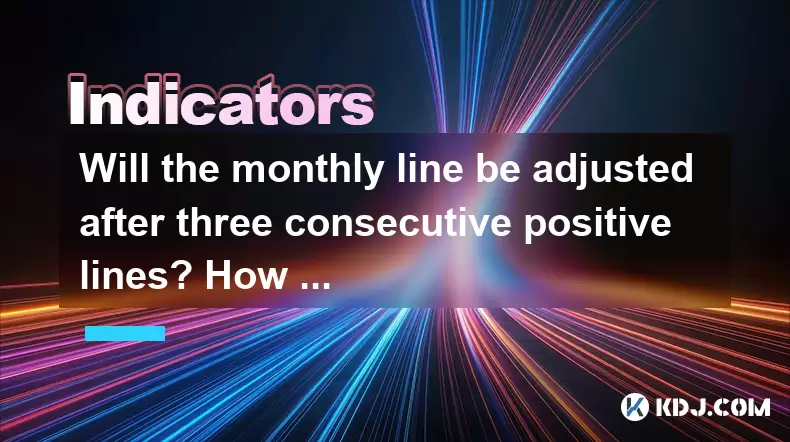
Understanding Monthly Candlestick Patterns in Cryptocurrency
In the realm of cryptocurrency trading, monthly candlestick patterns play a crucial role in analyzing long-term price behavior. A monthly chart provides traders with a macro view of how an asset has performed over extended periods. When observing three consecutive positive (green) candles on the monthly chart, it often raises questions about whether a correction or adjustment is likely to follow.
A positive monthly line indicates that the closing price for the month was higher than the opening price. Three such lines suggest strong bullish momentum and sustained buying pressure across multiple months. However, in markets as volatile as crypto, sustained upward movement without any pullback is rare, prompting traders to consider potential adjustments or retracements.
Historical Precedents of Monthly Line Adjustments
Looking back at historical data from major cryptocurrencies like Bitcoin (BTC) and Ethereum (ETH), we can observe several instances where three consecutive green monthly candles were followed by a red (negative) candle. These adjustments typically occur due to profit-taking after prolonged rallies or shifts in market sentiment.
For example, during BTC's bull run in 2020 and early 2021, there were multiple occasions where three green monthly lines were followed by a negative month. In these cases, the pullback wasn't necessarily steep, but it did signal a temporary cooling off period. The same pattern appeared in ETH’s price history, especially during its post-EIP-1559 rally.
It’s important to note that while a reversal isn’t guaranteed, historical trends indicate a high probability of some form of adjustment following extended bullish phases. This doesn’t always mean a bear market is imminent, but it does suggest caution.
Factors Influencing Post-Green-Line Corrections
Several factors influence whether a monthly line will adjust after three consecutive green lines:
- Market Sentiment: If investor enthusiasm wanes or if fear creeps into the market due to regulatory concerns or macroeconomic issues, a correction becomes more likely.
- Volume Trends: Sustained volume increases during the green months support the continuation of the trend. Conversely, declining volume in the third green month may hint at weakening demand.
- On-chain Metrics: Indicators like large whale movements, exchange inflows/outflows, and realized cap can offer insights into whether accumulation or distribution is occurring.
- Macro Conditions: Broader financial market conditions, including interest rates and inflation, also impact crypto prices. A tightening monetary policy environment could trigger a pullback even after strong bullish momentum.
These elements collectively shape the likelihood and magnitude of a monthly line adjustment.
Analyzing the Typical Callback Range
When a callback occurs after three green monthly lines, the range of the pullback varies depending on the strength of the prior move and prevailing market conditions. Based on historical observations, here are some general tendencies:
- Shallow Pullbacks (10–20%): These are common when the overall trend remains bullish. Traders see dips as buying opportunities, limiting downside risk.
- Moderate Corrections (20–40%): These happen when profit-taking intensifies or uncertainty emerges. It usually reflects a healthy consolidation phase rather than a full reversal.
- Deep Retracements (>40%): Rarely seen unless preceded by parabolic moves or followed by significant negative news. These often reset short-term sentiment and may test key support levels.
The callback range is not fixed and should be analyzed in context with other technical indicators like moving averages, Fibonacci retracement levels, and relative strength index (RSI).
How to Approach Trading After Three Green Monthly Candles
Traders who notice three green monthly lines might consider the following steps to manage their positions effectively:
- Monitor Volume and Momentum: Pay attention to whether volume supports continued gains. A drop in volume during the third green month may indicate weakening momentum.
- Identify Key Resistance and Support Levels: Use previous swing highs and lows to gauge potential areas where a pullback might stabilize or reverse.
- Use Risk Management Tools: Set stop-loss orders above recent swing lows or use trailing stops to protect profits.
- Watch for Divergences: If price makes new highs but momentum indicators like RSI or MACD don’t confirm the move, it could signal an impending reversal.
- Review On-chain and Off-chain Data: Analyze metrics like Bitcoin’s MVRV ratio, exchange reserves, and funding rates for added confirmation.
By combining these tools, traders can better assess whether a monthly adjustment is imminent and what kind of pullback to expect.
Frequently Asked Questions
Q: Does a red monthly candle after three green ones always indicate a bearish trend?
No, a single red monthly candle doesn’t necessarily signal a bearish trend. It could simply represent a consolidation phase or profit-taking. Trend analysis should include additional timeframes and technical indicators.
Q: How reliable are monthly candlestick patterns compared to weekly or daily charts?
Monthly patterns are less frequent but highly significant due to their long-term nature. They provide broader context and are best used alongside shorter-term charts for precise entry and exit points.
Q: Can fundamental developments override technical signals like three green monthly lines?
Yes, fundamental changes—such as adoption milestones, protocol upgrades, or regulatory shifts—can significantly alter the trajectory of a cryptocurrency, potentially overriding technical signals.
Q: Are callbacks more severe in altcoins compared to Bitcoin?
Altcoins tend to be more volatile than Bitcoin, so callbacks after bullish runs can be sharper. However, this also depends on the specific project, its use case, and overall market conditions.
Disclaimer:info@kdj.com
The information provided is not trading advice. kdj.com does not assume any responsibility for any investments made based on the information provided in this article. Cryptocurrencies are highly volatile and it is highly recommended that you invest with caution after thorough research!
If you believe that the content used on this website infringes your copyright, please contact us immediately (info@kdj.com) and we will delete it promptly.
- Polymarket Eyes $1B Valuation: Betting Big on Prediction Markets
- 2025-06-24 22:45:13
- Kane Brown and Taylor Lautner: From Real-Life Friends to 'The Token Groomsman'
- 2025-06-24 22:45:13
- Sami Sheen's Breast Implant Removal: A Health-First Decision
- 2025-06-24 22:25:12
- Bitcoin Treasury Trend: How London Small Caps Can Play the Game
- 2025-06-24 22:25:12
- Insta360 Mic Air: Wireless Audio Gets a Pocket-Sized Upgrade
- 2025-06-24 22:52:09
- Newton Protocol: Revolutionizing DeFi with Decentralized Compute and Yield Generation
- 2025-06-24 22:55:13
Related knowledge

How to judge that the price breaks through the cloud but the hysteresis line has not turned?
Jun 24,2025 at 10:43pm
Understanding the Ichimoku Cloud and Its ComponentsIn technical analysis, the Ichimoku Cloud, also known as the Ichimoku Kinko Hyo, is a powerful tool used by traders to gauge momentum, trend direction, and potential support or resistance levels. The cloud itself is composed of multiple lines: Tenkan-sen (conversion line), Kijun-sen (base line), Senkou ...
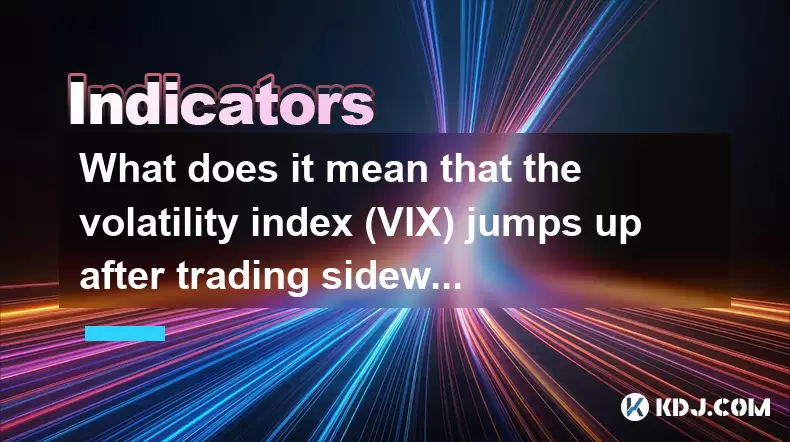
What does it mean that the volatility index (VIX) jumps up after trading sideways at a low level?
Jun 24,2025 at 09:35pm
Understanding the Volatility Index (VIX)The Volatility Index (VIX), often referred to as the 'fear gauge,' is a real-time market index that represents the market's expectation of 30-day forward-looking volatility. It is calculated by the Chicago Board Options Exchange (CBOE) based on the price inputs of S&P 500 index options. In the context of cryptocur...

What does it mean when the stochastic indicator repeatedly fluctuates at the 50 horizontal line?
Jun 24,2025 at 09:08pm
Understanding the Stochastic Indicator in Cryptocurrency TradingThe stochastic indicator is a popular momentum oscillator used by traders to identify potential trend reversals and overbought or oversold conditions. In cryptocurrency trading, where price movements can be highly volatile, understanding how this tool behaves becomes crucial for making info...
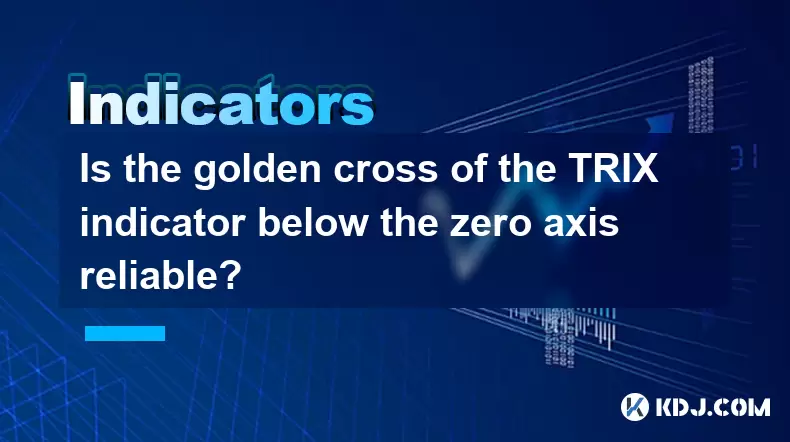
Is the golden cross of the TRIX indicator below the zero axis reliable?
Jun 24,2025 at 09:22pm
Understanding the TRIX Indicator and Its SignificanceThe TRIX (Triple Exponential Moving Average) indicator is a momentum oscillator used in technical analysis to identify oversold or overbought conditions, as well as potential trend reversals. It is calculated by smoothing price data three times using exponential moving averages and then taking the per...
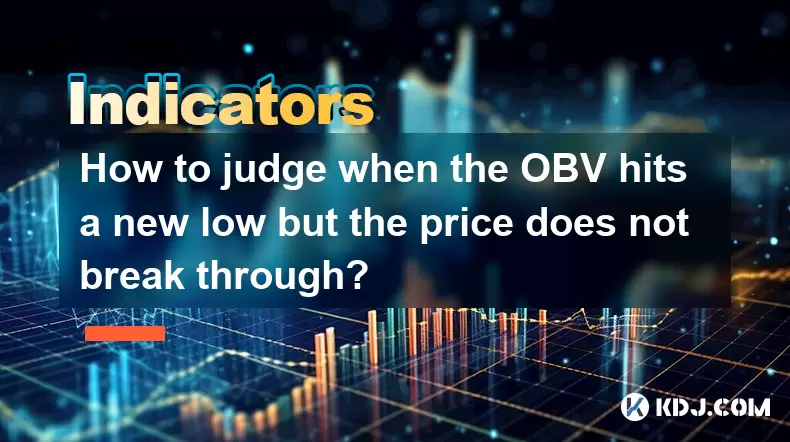
How to judge when the OBV hits a new low but the price does not break through?
Jun 24,2025 at 07:56pm
Understanding the Basics of OBV and Price ActionOn-Balance Volume (OBV) is a momentum indicator that uses volume flow to predict changes in stock or cryptocurrency prices. The core principle behind OBV is that volume often precedes price movement. When OBV hits a new low, but the price does not break through its previous support level, this can indicate...
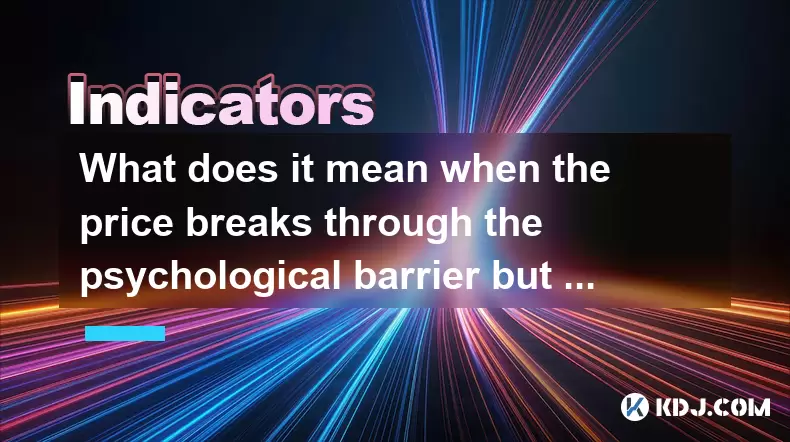
What does it mean when the price breaks through the psychological barrier but the trading volume does not cooperate?
Jun 24,2025 at 10:49pm
Understanding Psychological Barriers in Cryptocurrency TradingIn the cryptocurrency market, psychological barriers refer to specific price levels that traders and investors perceive as significant due to historical context or emotional attachment. These levels often act as support or resistance zones. For example, when Bitcoin approaches $30,000 or Ethe...

How to judge that the price breaks through the cloud but the hysteresis line has not turned?
Jun 24,2025 at 10:43pm
Understanding the Ichimoku Cloud and Its ComponentsIn technical analysis, the Ichimoku Cloud, also known as the Ichimoku Kinko Hyo, is a powerful tool used by traders to gauge momentum, trend direction, and potential support or resistance levels. The cloud itself is composed of multiple lines: Tenkan-sen (conversion line), Kijun-sen (base line), Senkou ...

What does it mean that the volatility index (VIX) jumps up after trading sideways at a low level?
Jun 24,2025 at 09:35pm
Understanding the Volatility Index (VIX)The Volatility Index (VIX), often referred to as the 'fear gauge,' is a real-time market index that represents the market's expectation of 30-day forward-looking volatility. It is calculated by the Chicago Board Options Exchange (CBOE) based on the price inputs of S&P 500 index options. In the context of cryptocur...

What does it mean when the stochastic indicator repeatedly fluctuates at the 50 horizontal line?
Jun 24,2025 at 09:08pm
Understanding the Stochastic Indicator in Cryptocurrency TradingThe stochastic indicator is a popular momentum oscillator used by traders to identify potential trend reversals and overbought or oversold conditions. In cryptocurrency trading, where price movements can be highly volatile, understanding how this tool behaves becomes crucial for making info...

Is the golden cross of the TRIX indicator below the zero axis reliable?
Jun 24,2025 at 09:22pm
Understanding the TRIX Indicator and Its SignificanceThe TRIX (Triple Exponential Moving Average) indicator is a momentum oscillator used in technical analysis to identify oversold or overbought conditions, as well as potential trend reversals. It is calculated by smoothing price data three times using exponential moving averages and then taking the per...

How to judge when the OBV hits a new low but the price does not break through?
Jun 24,2025 at 07:56pm
Understanding the Basics of OBV and Price ActionOn-Balance Volume (OBV) is a momentum indicator that uses volume flow to predict changes in stock or cryptocurrency prices. The core principle behind OBV is that volume often precedes price movement. When OBV hits a new low, but the price does not break through its previous support level, this can indicate...

What does it mean when the price breaks through the psychological barrier but the trading volume does not cooperate?
Jun 24,2025 at 10:49pm
Understanding Psychological Barriers in Cryptocurrency TradingIn the cryptocurrency market, psychological barriers refer to specific price levels that traders and investors perceive as significant due to historical context or emotional attachment. These levels often act as support or resistance zones. For example, when Bitcoin approaches $30,000 or Ethe...
See all articles
























































































